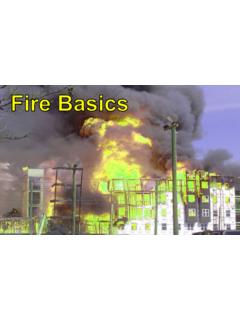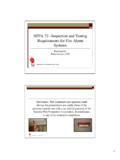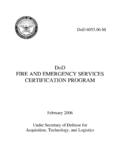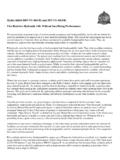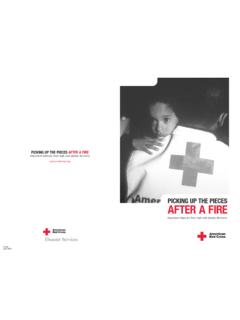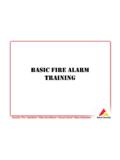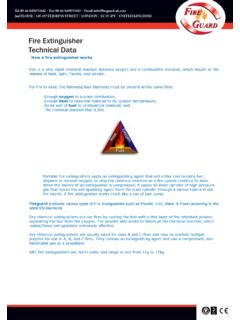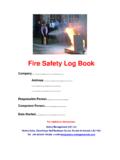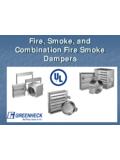Transcription of Facts About Fabric Flammability - Comfy Cozy
1 Facts About Fabric Flammability North Central Regional Extension Publication 174. Revised July 2003. Have you ever known someone of unsafe products, but cannot Facts burned when their clothes caught guarantee your safety. This publica- About Fabric fire ? Did you want to blame someone else when it happened? Do you tion will review Facts About Fabric Flammability that everyone needs to Flammability know how the fire started? What do know to avoid the costly and terrible you know About Fabric Flammability ?
2 Consequences of a clothing fire . If you have had no experience with clothing fires and burn injury, you fact 1: Most clothing and may be surprised to learn how fast household textiles will burn. your clothes can burn if set on fire . To burn, clothing must be ignited from some heat or flame source. You Clothing fires must be avoided don't need a flame, only heat to start because burn injuries are often a clothing fire . When common severe, disfiguring, and can cause apparel and household furnishing death.
3 Such tragedies do not have to textiles get hot enough they will burn happen. However, you must take and give off toxic smoke. For ex- responsibility for your own personal ample, if you leave a hot iron on a safety by learning the Facts . The cotton shirt too long, the heat will Consumer Product Safety Commis- scorch the shirt and can start a fire . sion (CPSC) is the governmental agency that administers the laws and standards that apply to Fabric flam- fact 2: Clothing fires are mability. It issues many educational started by common news releases, warnings, and recalls household ignition sources.
4 Clothing fires are often started by items commonly found and used around the house for heat or light. The majority of fires resulting in child fire injuries and deaths are started by children playing with fire in a bed- room with matches or lighters when Fabric or paper ignites (1). To reduce chances of clothing fires: Store all items likely to tempt small children safely out of reach. This includes . candles matches cigarettes and cigars cigarette lighters flammable liquids such as paint thinner, gasoline, charcoal lighter Use space heaters and fireplaces fact 3: Clothing fires can the person's chance of surviving a safely.
5 Before nap or bedtime, cause burn injury and death. residential fire . extinguish or turn off The exact number of clothing fires cigarettes and cigars that happen while a person is wear- fact 4: Clothing and candles ing the clothing in the is unavail- household textile labels fireplace embers able because of the way data are space heaters show if a Fabric is flame collected. The National Electronic resistant. kitchen ranges Injury Surveillance System (NEISS). Never reach into a fire or across an By looking at a Fabric you cannot compiles consumer product injury judge if it is flame resistant or flame open flame because your sleeve data based on reports from emer- might catch fire .
6 For example retardant, so you must look for a gency rooms and health care facili- label. If there is no label claiming candles ties. NEISS estimated that nation- gas flames or hot coils of kitchen flame resistance, you must assume wide 196,233 injuries (including the textile will burn rapidly. ranges 11,115 deaths) were associated with barbecue grills clothing in 2001, with the rate wood burning stoves Be sure you understand the terms per 100,000 population (1). How- used on clothing labels and other fireplaces ever, not all of these are from cloth- camp fires products.
7 Ing fires because cases of entangle- ment, suffocation, strangling, etc. are If it says It means counted in these totals. Flammable These three Inflammable words mean the Nevertheless, when clothing catches Combustible textile will burn fire , the burn injuries are often severe readily. and may cause death. An example reported by the Consumer Product Fireproof These three terms Safety Commission (CPSC) is the Non-combustible mean the textile case of a 69-year-old man whose Non-flammable will not burn.
8 Robe sleeve caught fire as he re- moved toast from an electric toaster. fire resistant These four terms The terry-cloth robe burned quickly, fire retardant mean the textile also burning the man. Although the Flame resistant will be slow to fire was extinguished, the man died Flame retardant ignite, may burn four days later. (2) According to the more slowly, may CPSC, a significant number of self-extinguish clothing fires occur with people over when the heat age 65. source is removed. The fire Administration points out that 80 percent of fire deaths fact 5: The way a Fabric occur in residences and that these burns depends partly on its residential fires most often start in fiber content.
9 The kitchen. People over 65 and Natural cellulosic fibers (cotton, children under 5 have the highest linen), manufactured cellulosic fibers risk of fire death in these fires but the (acetate, lyocell, and rayon), and number of these involving a clothing synthetic fibers (acrylic, nylon, fire was not indicated (3). Working lastol,olefin, polyester, and spandex). smoke alarms dramatically increase can burn quickly when ignited, but they behave somewhat differently as describes typical burning characteris- fact 6: The way a Fabric is they burn.
10 Generally cellulosics burn tics of fibers, ranking them from the made (knit, weave, lace, etc.). with a yellow flame, light smoke, and most to least hazardous. No flame have glowing embers like a fire - proof fibers are used in ordinary affects how it burns. place log, only much faster. Synthet- wearing apparel. Heavy close structures ignite with ics may catch fire quickly or shrink difficulty and burn more slowly than from the flame initially, but ultimately, Fabrics that are a blend of two or light, thin, or open fabrics.
